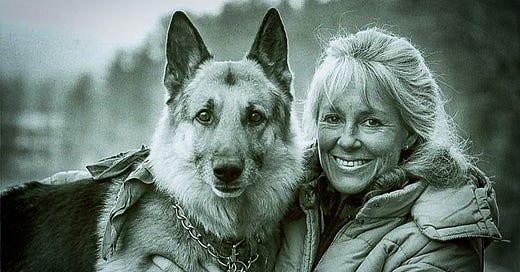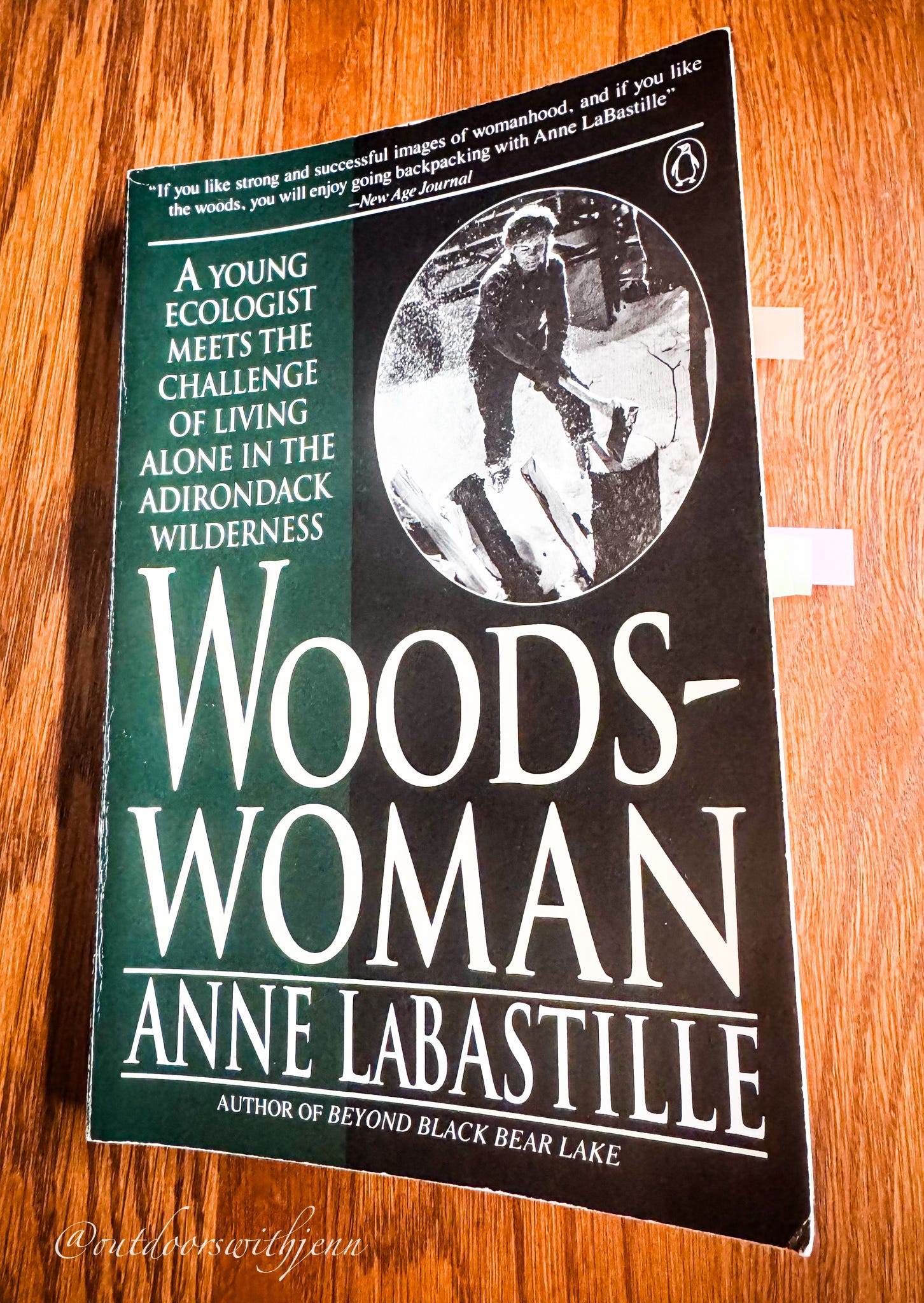Woodswoman by Anne LaBastille: From ecologist to pioneer
A book review: her story of living and thriving in the Adirondack wilderness
Anne LaBastille - or Annie to those close to her - wasn’t just any ordinary woman who carved a home deep in the Adirondack forest of New York. She was a quiet force - an introvert who felt strongest when she was alone, found purpose in the natural world, and a clear mind in the stillness around her.
For best viewing of this post, may I suggest using the Substack mobile/desktop app or view it in your browser. As this post is a bit long, Substack may truncate it when delivered to your email inbox.
Annie was an ecologist and a conservationist. She built a life that spoke not in noise, but in presence. Her first book about her Adirondack life, Woodswoman, felt personal from the start. It’s an honest account of living alone in the woods - rooted in self-reliance, a deep connection to nature, and the slow, sometimes uncomfortable process of becoming yourself. As someone who also finds peace in solitude and strength on the Adirondack trails, her story resonated with me.
“Since we’re the natural care-takers in this world, I feel the greatest good that women can do is help the environmental movement. Women can save Earth’s creatures and the planet.” - Anne LaBastille
My introduction to Anne LaBastille: The Woodswoman
When I first started hiking in the Adirondacks over 25 years ago, I was immediately drawn to the story of Annie - especially how she built a secluded log cabin by herself on a quiet lake, not far from where I often hiked. At the time, I didn’t yet have the words for what drew me so deeply to her life, but I felt a pull. Something about her fierce independence, her love of the wild, and her comfort in solitude spoke directly to a part of me I was just beginning to understand.
Over the years, as I hiked the solitary miles of the Northville-Placid Trail, I stopped feeling alone - and started feeling understood. Like Annie, I found comfort and happiness in the solitude.
In the quiet of the Adirondacks, I didn’t have to explain myself. I could just walk, listen, and feel like I belonged - held by the trees, the trail and the soft calls of birds in the canopy. Annie’s writing helped me see that more clearly.
Annie’s kinship with animals
The chapter I return to most in her book - Woodswoman - is the one on Animal Visitors. Annie writes about the wild creatures that passed through her life at the cabin - not as pets, but as neighbors. Their presence was steady and unspoken, a kind of company that asked nothing of her. Just like the woods, they let her be.
A red squirrel scolds her from the roof, deer pass silently through the trees, and loons call across the lake at dusk. She observes them closely, respectfully, learning their rhythms and moods. Their presence brings comfort, a kind of wordless company that asks nothing of her.
As an introvert, Annie found in these animals what people so rarely offer - space, stillness, and an unspoken trust. This chapter is about sharing the land without needing to claim it - about noticing, respecting, and quietly belonging. Connection, she shows us, begins with paying attention.
Annie discovers a den of red fox kits tucked close to her cabin. She watches quietly from a distance as the mother returns with small meals, the kits tumbling and learning to explore. It's a tender, unspoken lesson in respect: she doesn’t feed them or interfere - just observes how they find their way in the world. That brief glimpse into their family life feels like a silent pact between Annie and the wild: coexistence without intrusion, connection without disturbance.
Other writings similar to Woodswoman
You may enjoy Woodswoman if you’re drawn to stories of solitude and resilience - like Henry David Thoreau’s Walden, Rachel Carson’s Silent Spring or Cheryl Strayed’s Wild. Each offers a different path through wildness, but all speak to the strength found in stillness and the clarity that comes from walking your own way.
More about Annie
Anne LaBastille (1933–2011) was a woman who chose a quieter path - one shaped by solitude, service, and a deep connection to wild places. Best known for her Woodswoman series, she built and lived in a small log cabin on Twitchell Lake, without electricity or plumbing, writing honestly about a life pared down to its essentials. A trained ecologist and one of the first female licensed guides in New York, she spent years advocating for the Adirondacks - serving 17 years on the Adirondack Park Agency Board and raising early alarms about acid rain.
Before turning her focus homeward, she worked in Guatemala to help save endangered giant grebes and helped the World Wildlife Fund establish preserves in Central America. She wrote dozens of articles and books, always with the same quiet conviction. In 2017, her cabin - her refuge and writing space - was moved to the Adirondack Experience museum, where visitors can step into the world she so fiercely protected.
Thank you for your likes and re-stacks (sharing). If this information resonates with you, please tap the 🧡 button above to help others discover Outdoors with Jenn.








